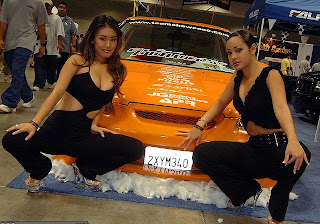For manufacturers, product innovation is something that must be done to win the competition. That step is now also made by Suzuki Motor. Japanese car manufacturer is currently preparing a new generation version of Suzuki Swift Sport. The concept car, which is now named the Suzuki S-concept, currently on display at the mat Geneva Auto Show 2011 which took place March 1 to 13.
“Swift S carrying the three-door concept car design that is characteristic of a sports car. The impression sporty aggressive look at the stern, especially from the big spoiler and double mufflers,” said Suzuki’s press release. The design concept that uses the latest generation
Suzuki Swift design a concept exhibited at the Paris Motor Show 2010 mat which lasted 2 to 17 October 2010. The engine uses berkapasitas1.600 M16A cc.
Only, Suzuki did not mention the amount of power and torque produced. Manufacturers were only mentioned, power is channeled to the wheels via a manual transmission devices with six levels of acceleration. Wheel drive system uses two front wheels. Compared with the Suzuki Swift Current, S-concept is lower. However, over 60 millimeters wide. Overall, the Swift Sport is a car length 3.89 meters (m), 1.75 m width, and height of 1.47 m. The axle length reaches 2.43 m.
Design Suzuki Swift S 2011




 Sporty impression thanks to the use of over-sized 18-inch rims and tires size 225/45R18 thick. Especially in the cabin, leather-clad seats with Recaro sports cars such as logos. While the steering wheel, instrument panel created specifically to reinforce the impression of a sports car. However, until now the Suzuki has not provided the assurance when the car is mass produced.
Sporty impression thanks to the use of over-sized 18-inch rims and tires size 225/45R18 thick. Especially in the cabin, leather-clad seats with Recaro sports cars such as logos. While the steering wheel, instrument panel created specifically to reinforce the impression of a sports car. However, until now the Suzuki has not provided the assurance when the car is mass produced. Interior Design Suzuki Swift S 2011
Interior Design Suzuki Swift S 2011 Interior Design Suzuki Swift S 2011
Interior Design Suzuki Swift S 2011








































